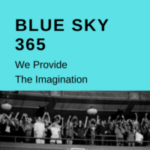On a recent visit to the New Museum in Manhattan, I experienced an exhibit (also in digital form) by Rivane Neuenschwander (a social organizer and artist), entitled “A Day Like Any Other.” The artist’s work effectively triggers an intellectual, emotional, and tactual relationship with each visitor. In fact, her “A Day Like Any Other” is more effective that many social media campaigns or crowdsourcing efforts, gathering meaningful personal user information that is usually difficult to collect. There is also no bombarding the viewer with marketing messages all day, every day.
So why is Rivane’s exhibit so effective? Her exhibit in part benefits from the fact that it is colorful and simplistic, and effectively triggers a personal cause-related “call to action” response from many visitors. It is also unique because it does not discriminate; most people have a dream or wish they would like to see come true for themselves or someone else. Rivane requests that you make an anonymous wish on a small piece of paper, roll it into a column-like shape, take out an existing wish ribbon (you get to keep a stranger’s wish), and replace it with your own. The artist will then print the new wish (if it is selected) on a new colored ribbon, and place it in that location on her exhibit wall.
Rivane selects new wishes after her exhibit has been displayed for several weeks or months in a city, choosing the ones she believes are unique or have not yet been displayed. The exhibit then moves on to a new city or country.
Here are a few of the several thousand ribbon wishes at its current location in Manhattan:
I Wish For World Peace
I Wish For Cancer Cures
I Wish For Love And Career Success
I Wish For Peace In The Middle East
I Wish For A Happy Life Free From Pain And Sadness
I Wish Humanitarian People Were Chosen As Leaders Of Nations
Rivane’s social crowdsourcing exhibit is a self-perpetuating (viral) exhibit that rejuvenates itself in each new location it travels to. Visitor responses can also be teased out to reveal unique responses and interests that relate specifically to each city and country (culture), further inspiring the artist to design new social statements and works of art.
In the end, the exhibit successfully accomplishes the artist’s objective by gathering information virally, and more effectively than many costly digital social media campaigns. The installation is truly viral by definition, because it is self-replicating, and must be to exist. This technique could also be used to learn consumer preferences about a product or service on a local, national, or global scale.
What else motivates viewers to take part in Rivane’s social statement? She provides a forum to be heard (a voice), something physical (a stranger’s ribbon wish) in return, and emotional exchange. What the exhibit cannot do is easily build in the “friending” relationship logic connecting people you know and those with similar interests, which is easily accomplished in digital platform design.
Does Rivane’s exhibit successfully crowdsource? Yes, by relying on a large group of people or community (a crowd), through an open call to create and build a rich database of user information. She asks a general question and provides a cause, emotional trigger, trusted public stage, and user control to share personal feelings anonymously with the world. The instillation is also social experiment and work of art.
By engaging with your audience at a unique location, creating a two-way conversation, and not exclusively relying on digital technology, your social media efforts have a better chance of developing an intimate and trusted relationship. People generally enjoy talking about themselves, so don’t think about what you can get from someone, but rather how you can involve them.
By: Peter Sabbagh
